
Shutterstock
From the early days of transistor radios and mainframe computers to the advanced technologies of artificial intelligence and quantum computing, the evolution of technology has dramatically transformed our world. Over the decades, each new innovation has not only shaped industries but also influenced the way we live, work, and interact with each other. This journey through technological advancements showcases the milestones that have defined the modern era. As we explore the key developments from 1950 to 2024, we’ll see how each leap forward has paved the way for the next. Join us as we trace the incredible progress of technology through the years.
Transistor Radios

Shutterstock
The introduction of transistor radios in the 1950s revolutionized personal entertainment. These portable devices allowed people to listen to music and news anywhere, anytime, unlike the bulky home radios of the previous era. The affordability and convenience of transistor radios made them incredibly popular, especially among the youth. This innovation marked the beginning of a more mobile and connected society.
Color Television

Shutterstock
The 1950s saw the introduction of color television, bringing vibrant and lifelike images into people’s homes for the first time. This technology transformed the viewing experience, making TV shows and movies more engaging and enjoyable. As color TV became more widespread, it also influenced the production of television content, with networks investing in more colorful and visually appealing programming. The shift from black-and-white to color was a significant milestone in the evolution of home entertainment.
UNIVAC I
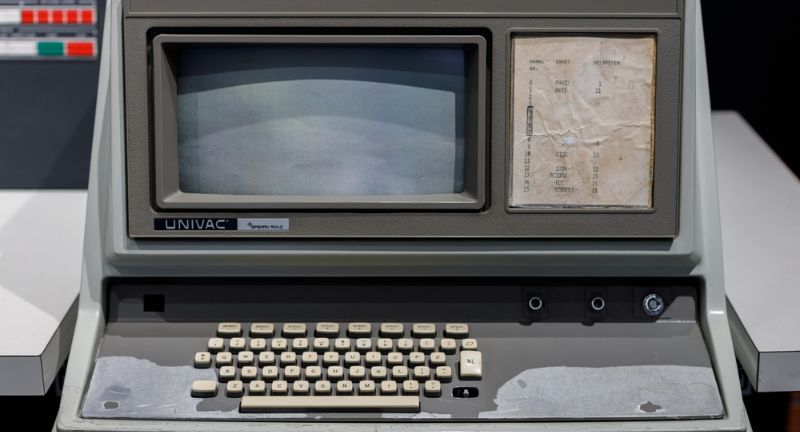
Shutterstock
The UNIVAC I, introduced in the 1950s, was the first commercial computer designed for business use. It marked a significant leap forward in computing, transitioning from experimental machines to practical tools for data processing and management. UNIVAC I was used by the U.S. Census Bureau, showcasing its capability to handle large amounts of data efficiently. This innovation laid the groundwork for the future of business computing, influencing the development of more advanced systems.
Credit Cards

Shutterstock
In 1950, the introduction of the Diners Club card marked the birth of the modern credit card industry. Initially used by a small group of customers, this card allowed people to make purchases on credit at participating restaurants. Over time, the concept expanded, and credit cards became a common method of payment, revolutionizing the way consumers interacted with businesses. The credit card not only offered convenience but also paved the way for the development of the global financial system we know today.
Space Exploration

Shutterstock
The 1960s were defined by the Space Race, culminating in the Apollo program, which landed humans on the moon in 1969. This achievement was not only a technological marvel but also a symbol of human ambition and the drive to explore beyond our planet. The moon landing captivated the world and inspired generations to dream big. The technologies developed for space exploration had lasting impacts on various fields, including communications, materials science, and computing.
Mainframe Computers
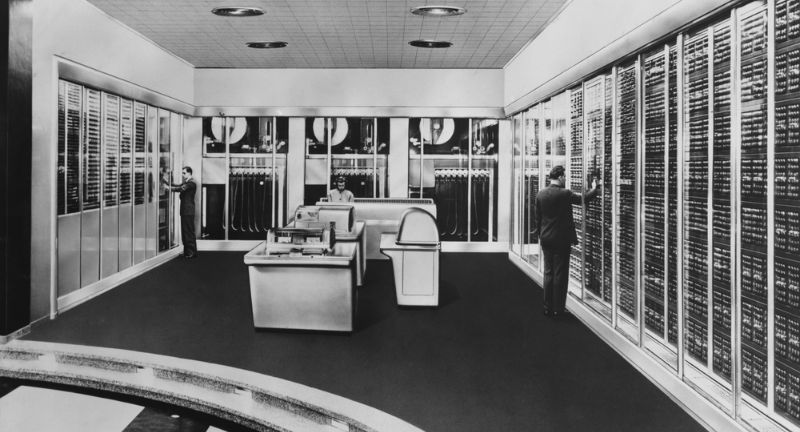
Shutterstock
In the 1960s, IBM introduced the System/360, a family of mainframe computers that revolutionized business computing. The System/360 was unique in its ability to handle a wide range of applications, from scientific research to business data processing, making it versatile and widely adopted. This innovation allowed businesses to streamline their operations, leading to increased productivity and efficiency. The success of the System/360 set the standard for future mainframe computers and solidified IBM’s position as a leader in the industry.
Touch-Tone Phones

Shutterstock
The introduction of touch-tone phones in the 1960s replaced the slower rotary dials with a faster, more efficient method of dialing. This innovation allowed users to enter phone numbers quickly, significantly speeding up the process of making calls. The touch-tone system also paved the way for automated phone services, such as banking and customer support, by enabling the use of keypads for menu navigation. This advancement in telecommunication technology marked a shift towards more user-friendly and efficient communication methods.
Early Video Games

Shutterstock
The 1960s also saw the birth of early video games, with “Spacewar!” being one of the first to gain popularity among computer enthusiasts. Developed at MIT, “Spacewar!” was a simple yet addictive game that showcased the potential of computers for entertainment. Although it was limited to a few academic and research institutions, “Spacewar!” laid the foundation for the video game industry that would emerge in the following decades. This pioneering game demonstrated the exciting possibilities of interactive digital entertainment.
Microprocessors
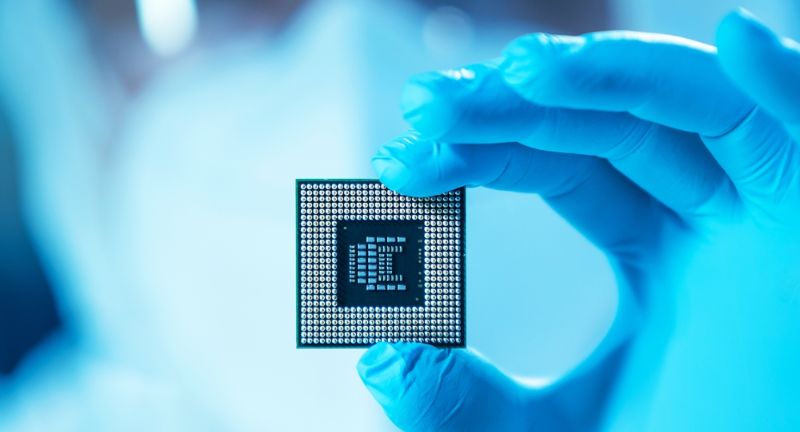
Shutterstock
The invention of the microprocessor in the 1970s, particularly the Intel 4004, marked a significant turning point in computing technology. This tiny chip, which could perform all the functions of a computer’s central processing unit, enabled the development of smaller, more affordable computers. The microprocessor revolutionized not just computing but also countless other industries, from automotive to telecommunications. It was the key component that led to the personal computing revolution of the following decades.
Home Video Game Consoles

Shutterstock
The 1970s introduced the first home video game consoles, with the Magnavox Odyssey and Atari 2600 leading the charge. These consoles brought the excitement of video gaming into the living room, allowing families to play together. The simple yet engaging games laid the foundation for the gaming industry, which would grow exponentially in the coming decades. These early consoles were a glimpse into the future of home entertainment, sparking a global fascination with video games.
VCRs

Shutterstock
Videocassette recorders (VCRs), which became popular in the 1970s, revolutionized the way people watched television and movies. For the first time, viewers could record their favorite shows and watch them at their convenience, or rent movies to watch at home. This technology offered unprecedented control over the viewing experience, leading to the rise of home video as a major industry. The VCR was a precursor to the on-demand entertainment options we have today, changing how we consume media forever.
Email

Shutterstock
In 1971, Ray Tomlinson sent the first networked email, a simple test message that would revolutionize communication. Email quickly became a fundamental tool for both personal and professional correspondence, offering a faster and more convenient alternative to traditional mail. This technology played a critical role in the development of the internet, as it became one of the most widely used applications in the online world. The introduction of email marked the beginning of the digital communication age.
Personal Computers
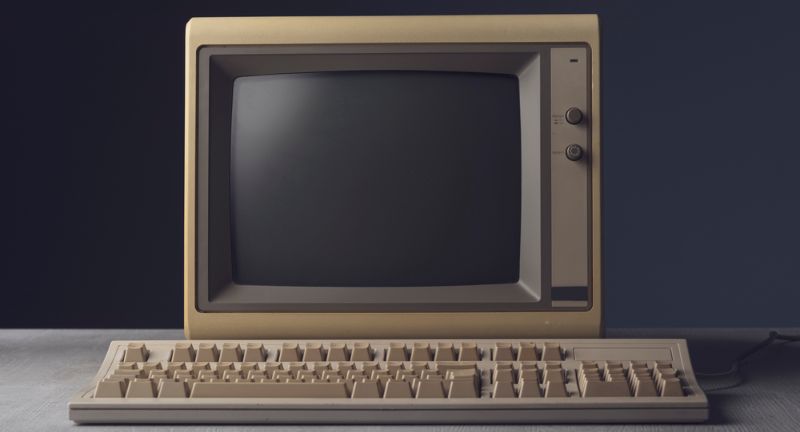
Shutterstock
The 1980s were a pivotal decade for personal computing, with the introduction of the IBM PC and Apple Macintosh. These computers brought powerful processing capabilities into the home, changing how people worked, learned, and played. The user-friendly interfaces and versatile software options made these machines accessible to the general public, not just tech enthusiasts. The widespread adoption of personal computers in the 1980s set the stage for the digital revolution that would follow.
Mobile Phones
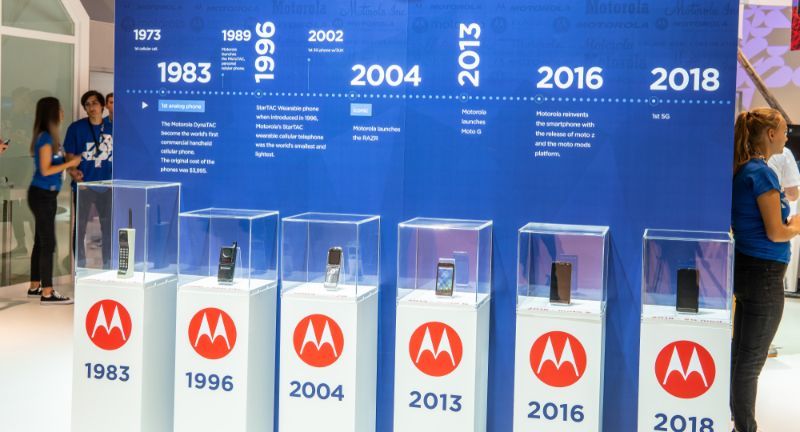
Shutterstock
In 1983, the release of the Motorola DynaTAC, the first commercially available mobile phone, changed the way people communicated. This bulky device offered a glimpse into the future of mobile communication, allowing users to make calls from virtually anywhere. Despite its high cost and limited functionality, the DynaTAC paved the way for the mobile phones we rely on today. Over time, mobile phones would evolve from luxury items to essential tools, fundamentally transforming our daily lives.
CDs

Shutterstock
Compact Discs (CDs) were introduced in the 1980s and quickly became the standard for music storage and playback. CDs offered superior sound quality and durability compared to vinyl records and cassette tapes, making them the preferred medium for music lovers. The digital format of CDs also allowed for greater flexibility in recording and playing music. This innovation not only revolutionized the music industry but also paved the way for future digital media formats.
The Internet

Shutterstock
The transition of ARPANET to the early internet in the 1980s marked the beginning of a new era in global communication. The internet connected computers around the world, enabling instant access to information and unprecedented levels of communication. This technology rapidly expanded beyond academic and military use, becoming a fundamental part of daily life for billions of people. The internet laid the foundation for the digital age, revolutionizing industries, economies, and personal interactions.
World Wide Web

Shutterstock
In the 1990s, Tim Berners-Lee introduced the World Wide Web, making the internet accessible to the public. The World Wide Web transformed the internet from a technical tool used by scientists and researchers into a global platform for information sharing, communication, and commerce. Websites, search engines, and browsers became the new way people accessed and shared information, leading to the explosive growth of the internet. The World Wide Web is one of the most significant technological innovations of the 20th century, fundamentally changing how we live and work.
Laptops
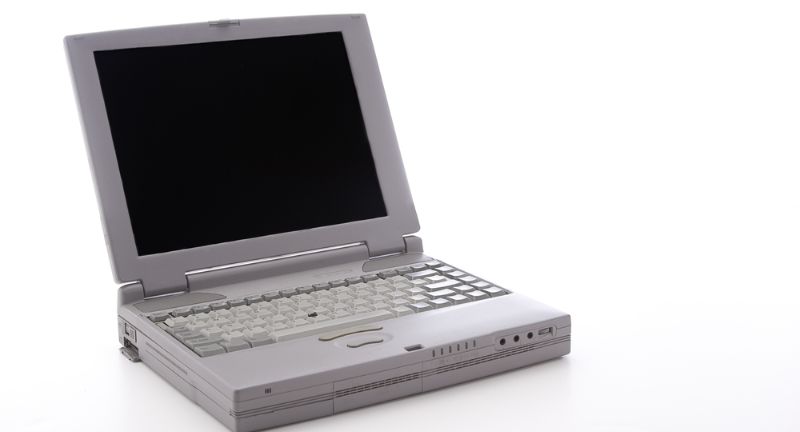
Shutterstock
The 1990s saw the rise of laptops, with devices like the IBM ThinkPad leading the charge. These portable computers allowed people to work, study, and entertain themselves on the go, breaking free from the confines of the desktop. Laptops became indispensable tools for professionals and students alike, offering flexibility and convenience. The evolution of laptops throughout the 1990s set the stage for the mobile computing revolution that would follow in the 21st century.
Digital Cameras

Shutterstock
The introduction of consumer digital cameras in the 1990s revolutionized photography, making it easier and more accessible than ever before. Unlike traditional film cameras, digital cameras allowed users to take, view, and delete photos instantly, without the need for film development. This innovation democratized photography, allowing people to capture and share moments in real-time. Digital cameras were the precursor to the smartphone cameras that have become ubiquitous today, changing how we document and share our lives.
DVDs

Shutterstock
Digital Versatile Discs (DVDs) were introduced in the 1990s, quickly replacing VHS tapes as the standard format for video. DVDs offered superior video and audio quality, along with additional features like subtitles, multiple audio tracks, and interactive menus. The introduction of DVDs marked a significant leap forward in home entertainment, offering a more immersive and convenient viewing experience. This format dominated the home video market until the advent of digital streaming in the 21st century.
Smartphones
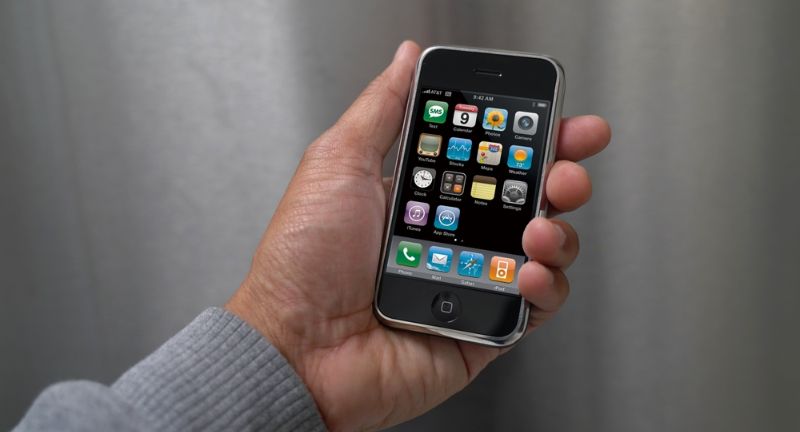
Shutterstock
The launch of the iPhone in 2007 revolutionized communication, computing, and entertainment, marking the beginning of the smartphone era. Smartphones combined the functions of a phone, computer, camera, and media player into a single, portable device. This innovation transformed how people interact with the world, offering instant access to information, social media, and countless apps. The smartphone became an essential part of daily life, driving the development of mobile technology and the digital economy.
Social Media
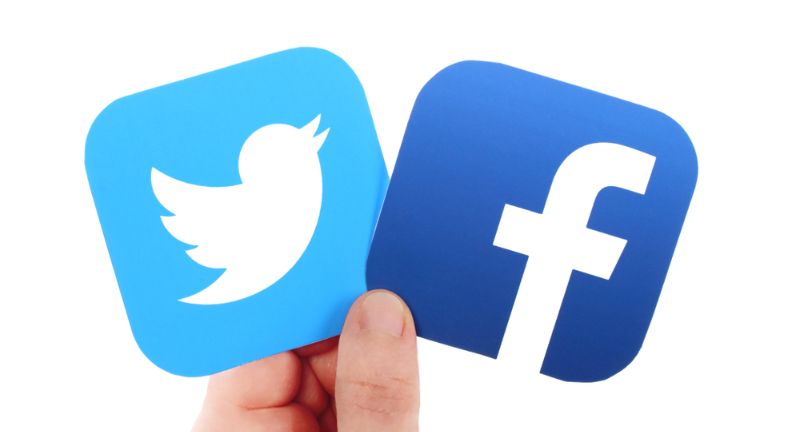
Shutterstock
The rise of social media platforms like Facebook, Twitter, and YouTube in the 2000s transformed global communication. Social media offered new ways for people to connect, share content, and build communities across the globe. This technology also changed the way businesses and organizations interact with their audiences, leading to the rise of digital marketing and influencer culture. Social media became a powerful tool for personal expression, social movements, and information sharing, fundamentally altering the landscape of communication.
Broadband Internet

Shutterstock
The widespread adoption of broadband internet in the 2000s revolutionized how people accessed information and interacted online. Broadband offered faster and more reliable internet connections, enabling seamless streaming, gaming, and communication. This technology made the internet more accessible and practical for everyday use, driving the growth of online services and content. The shift to broadband was a key factor in the expansion of the digital economy, supporting the rise of e-commerce, social media, and cloud computing.
Wi-Fi

Shutterstock
The advent of Wi-Fi technology in the early 2000s allowed for wireless internet access, greatly enhancing mobility and convenience. Wi-Fi networks made it possible to connect to the internet from anywhere within range, eliminating the need for physical cables. This innovation revolutionized how people work, learn, and communicate, supporting the rise of mobile devices like laptops, smartphones, and tablets. Wi-Fi became a standard feature in homes, offices, and public spaces, contributing to the ubiquity of the internet in daily life.
Tablets

Shutterstock
Tablets, exemplified by the launch of the iPad in 2010, bridged the gap between smartphones and laptops, offering a portable and user-friendly device for browsing, reading, and entertainment. Tablets quickly became popular for their versatility, combining the functionality of a computer with the ease of use of a mobile device. They were particularly well-suited for media consumption, from streaming videos to reading e-books, making them a favorite among consumers. The success of tablets influenced the design and functionality of subsequent mobile devices, cementing their place in the digital ecosystem.
Cloud Computing

Shutterstock
The rise of cloud computing in the 2010s revolutionized data storage, software distribution, and computing power. Services like Amazon Web Services, Google Drive, and Microsoft Azure enabled businesses and individuals to store and access data remotely, reducing the need for physical hardware. Cloud computing also facilitated the development of new business models, such as Software as a Service (SaaS), which provided greater flexibility and scalability. This technology has become a cornerstone of modern IT infrastructure, supporting everything from startups to large enterprises.
Artificial Intelligence

Shutterstock
The 2010s saw significant advancements in artificial intelligence (AI), with technologies like machine learning, natural language processing, and computer vision becoming part of everyday life. AI-powered virtual assistants, such as Siri, Alexa, and Google Assistant, brought AI into millions of homes, making it easier to interact with technology. These advancements also impacted industries like healthcare, finance, and transportation, where AI is used to analyze data, improve efficiency, and make predictions. The integration of AI into various aspects of life has transformed how we interact with technology, driving innovation across multiple sectors.
Streaming Services

Shutterstock
Streaming services like Netflix and Spotify revolutionized how we consume media in the 2010s, shifting from physical formats and broadcast schedules to on-demand content. These platforms offered instant access to vast libraries of movies, TV shows, and music, allowing users to watch or listen to what they wanted, when they wanted. The convenience and variety offered by streaming services quickly made them the preferred method of media consumption, leading to the decline of traditional media formats. The success of these services has had a profound impact on the entertainment industry, influencing content production, distribution, and consumption.
5G Networks
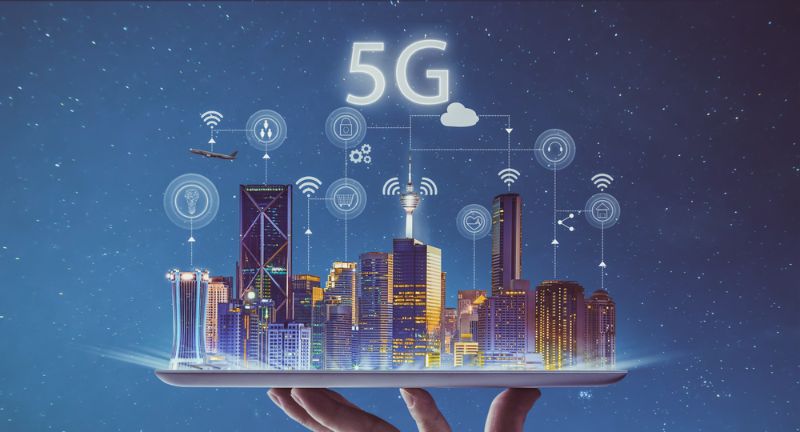
Shutterstock
The rollout of 5G networks in the 2020s brought faster internet speeds, lower latency, and enhanced connectivity, paving the way for new technological advancements. 5G networks support a wide range of applications, from augmented reality and virtual reality to autonomous vehicles and smart cities. This technology also improves the performance of mobile devices, making it possible to stream high-quality video, play online games, and conduct business seamlessly, even on the go. The widespread adoption of 5G is expected to drive innovation across various industries, transforming how we live and work in the digital age.
Electric Vehicles

Shutterstock
Electric vehicles (EVs) became increasingly popular in the 2020s, driven by advancements in battery technology and a growing emphasis on sustainability. Companies like Tesla led the charge, making EVs more accessible and desirable to consumers. These vehicles offer a cleaner alternative to traditional gasoline-powered cars, reducing carbon emissions and dependence on fossil fuels. The shift towards electric mobility represents a significant step forward in the global effort to combat climate change and promote sustainable transportation.
Augmented Reality (AR) and Virtual Reality (VR)

Shutterstock
Augmented Reality (AR) and Virtual Reality (VR) technologies gained mainstream attention in the 2020s, especially in gaming, education, and remote work. AR overlays digital information onto the real world, enhancing the user’s experience with interactive elements, while VR immerses users in entirely virtual environments. These technologies have transformed how we interact with digital content, offering new ways to learn, play, and collaborate. As AR and VR continue to develop, they are expected to play a significant role in various industries, from entertainment to healthcare.
Quantum Computing

Shutterstock
The 2020s saw significant advancements in quantum computing, a field that promises to revolutionize computing power. Unlike traditional computers, which use bits to process information, quantum computers use qubits, allowing them to solve complex problems at unprecedented speeds. This technology has the potential to transform industries such as cryptography, materials science, and artificial intelligence. While still in its early stages, quantum computing is poised to become a key player in the next generation of technological innovation.
AI Integration

Shutterstock
In 2024, artificial intelligence continues to be deeply integrated into various industries, influencing everything from healthcare to finance. AI technologies are now more sophisticated, offering predictive analytics, automation, and personalized experiences in ways previously unimaginable. The continued evolution of AI is driving innovation, improving efficiency, and creating new opportunities across sectors. As AI becomes more advanced, its impact on society and the global economy is expected to grow exponentially.
Space Tourism

Shutterstock
Space tourism has become a reality in the 2020s, with private companies like SpaceX pushing the boundaries of space exploration and travel. What was once the domain of governments and astronauts is now accessible to private citizens, albeit at a high cost. These developments have sparked renewed interest in space exploration and the possibilities of human life beyond Earth. Space tourism represents a significant milestone in humanity’s journey to explore and potentially colonize other planets.
Sustainable Technology

Shutterstock
The focus on sustainable technology has intensified in the 2020s, with innovations aimed at reducing carbon footprints and promoting environmental responsibility. From renewable energy sources like solar and wind power to advanced recycling technologies and carbon capture, sustainable tech is reshaping industries. These advancements are not only crucial for combating climate change but also for building a more resilient and sustainable global economy. The push towards sustainability is driving research, development, and adoption of green technologies across various sectors.
Metaverse Development

Shutterstock
The concept of the metaverse, a virtual shared space, has become more defined and accessible in 2024, with significant developments in technology and infrastructure. The metaverse combines elements of virtual reality, augmented reality, and the internet, creating immersive digital environments where people can work, play, and socialize. Companies are investing heavily in the development of metaverse platforms, seeing it as the next frontier of the digital economy. As the metaverse continues to evolve, it is expected to reshape the way we interact with technology and each other.
Conclusion

Shutterstock
As we reflect on the evolution of technology from 1950 to 2024, it’s clear that each breakthrough has brought us closer to a future once only imagined in science fiction. These advancements have not only transformed industries but also reshaped our daily lives, connecting us in ways that were unimaginable just a few decades ago. The rapid pace of innovation shows no signs of slowing down, promising even more incredible developments in the years to come. Understanding this journey helps us appreciate the tools and conveniences we now take for granted. As we look ahead, we can only wonder what the next chapter of technological evolution will bring.






































































